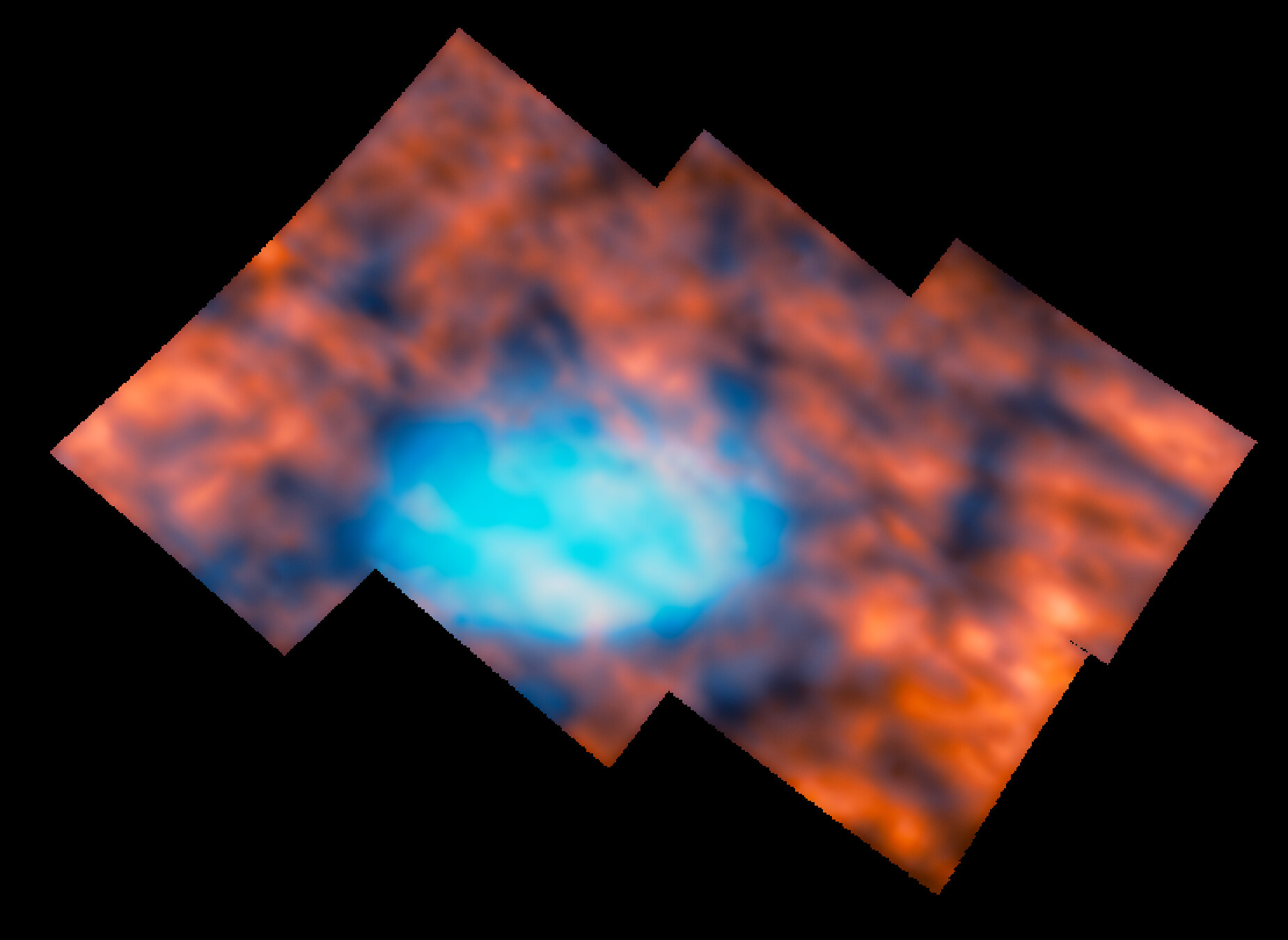Using the joint James Webb Space Telescope of NASA, the European Space Agency (ESA) and the Canadian Space Agency (CSA), a team of scientists has discovered a number of previously unseen features in the upper atmosphere of Jupiter. The features were found in the atmospheric region above the iconic Great Red Spot – a high-pressure area in Jupiter’s atmosphere that produces a massive anticyclonic storm that has been visible to astronomers since 1831.
Before the most recent observations of the region, scientists believed that the region was insignificant in nature, with no complex atmospheric structures or activity. However, Webb has shown that the area is of scientific interest, and is already providing scientists with more insights into the inner workings of Jupiter and its vast atmosphere.
Although it may seem easy, observing Jupiter in great detail with huge telescopes like Webb and Hubble is difficult. The glow from Jupiter’s upper atmosphere is weak compared to the glow from the planet’s north and south polar regions, meaning that visible-light telescopes such as Hubble and some ground-based telescopes have a harder time observing specific structures in the planet’s upper atmosphere. However, due to Webb’s sensitivity to infrared light, the telescope is able to observe the upper atmosphere without interference from the planet’s bright polar regions. In addition, Webb’s advanced design and size mean it can not only collect data on the upper atmosphere, but also in unprecedented detail.
Webb’s observations of the region around the Great Red Spot. (Credit: ESA/Webb/NASA/CSA/Jupiter ERS Team/J. Schmidt/H. Melin/M. Zamani (ESA/Webb))
Jupiter’s upper atmosphere serves as the boundary between the planet’s vast magnetic field and the inner atmosphere, and its structure is largely shaped by the interaction between the two regions. For example, the upper atmosphere, with some help from volcanic material ejected from the moon Io, produces the bright northern and southern lights. However, closer to the planet’s equator, the structure of the atmosphere is largely determined by incident sunlight, and with Jupiter receiving only four percent of the sunlight received on Earth, scientists predicted that this region would be less complex than further north and south. region of the upper atmosphere.
However, this was only a hypothesis of the scientists, as the observations needed to determine the structure of the upper atmosphere in the equatorial regions were not yet available – that was until Webb’s debut in 2022.
Webb first observed the equatorial regions of the upper atmosphere, specifically the region above the Great Red Spot, in July 2022 using the Near-Infrared Spectrograph (NIRSpec) Integral Field Unit functions. The main goal of the team of scientists in the observations was to explore the area and determine if the area is as boring as scientists previously thought.
However, when Webb’s observations and data were returned to the team, they were surprised to see that the entire region above the Great Red Spot hosts a variety of complex structures and activity, including dark arcs and bright spots.
“We thought this region, perhaps naively, would be really boring. In fact, it’s just as interesting as the Northern Lights, if not more so. Jupiter never ceases to surprise,” said lead author Henrik Melin of the University of Leicester in the United Kingdom.
Much of the light emitted from the region is reflected sunlight, however, some of the structures and activity discovered in the region appear to be altered by some mechanism other than sunlight.
“One way you can change this structure is through gravitational waves – similar to the waves that hit the beach and create ripples in the sand. These waves are generated deep in the turbulent lower atmosphere, all around the Great Red Spot, and can travel aloft and change the structure and emissions of the upper atmosphere,” explained Melin.

The atmosphere surrounding the Great Red Spot as seen by NIRSpec. (Credit: ESA/Webb/NASA/CSA/H. Melin/M. Zamani (ESA/Webb))
Melin et al. they explain in their study that these atmospheric waves can sometimes be observed on Earth. However, the waves that occur on Earth are much weaker than the ones Webb observed on Jupiter. The team plans to make follow-up observations of these atmospheric wave patterns to study how the waves move through Jupiter’s upper atmosphere. In addition, understanding the wave patterns will allow scientists to develop an understanding of how much energy is trapped in the region and how the structures discovered by Webb change over time.
Webb’s latest observations will not only enhance scientists’ understanding of the Jovian upper atmosphere, but will also help inform mission planning and future science observations on ESA’s Jupiter Icy Moons Explorer, or JUICE, mission. JUICE is currently en route to Jupiter, where it will explore the planet’s three largest oceanic moons, Ganymede, Callisto and Europa.
The observations of Melin et al. was taken as part of Webb’s Early Release Science (ERS) 1373 program. The observation proposal was written back in 2017 and was originally written to understand the temperature above the Great Red Spot.
🆕 Scientists have found complex formations above Jupiter’s famous Great Red Spot! Read more: https://t.co/wHAiYBap2l or 🧵👇 pic.twitter.com/71J9ToJGIH
— ESA Webb Telescope (@ESA_Webb) June 25, 2024
“This ERS proposal was written back in 2017. One of our goals was to investigate why the temperature above the Great Red Spot appeared to be as high as it was when recent observations using NASA’s Infrared Telescope Facility revealed it. However, our new data showed very different results,” said co-author Imke de Pater of the University of California, Berkeley.
The results of Melina et al. were published in the journal Astronomy of nature.
(Main image: Jupiter imaged in the near infrared by Webb’s NIRCam instrument. Credit: NASA/ESA/CSA/Jupiter ERS Team/Ricardo Hueso (UPV/EHU)/Judy Schmidt)